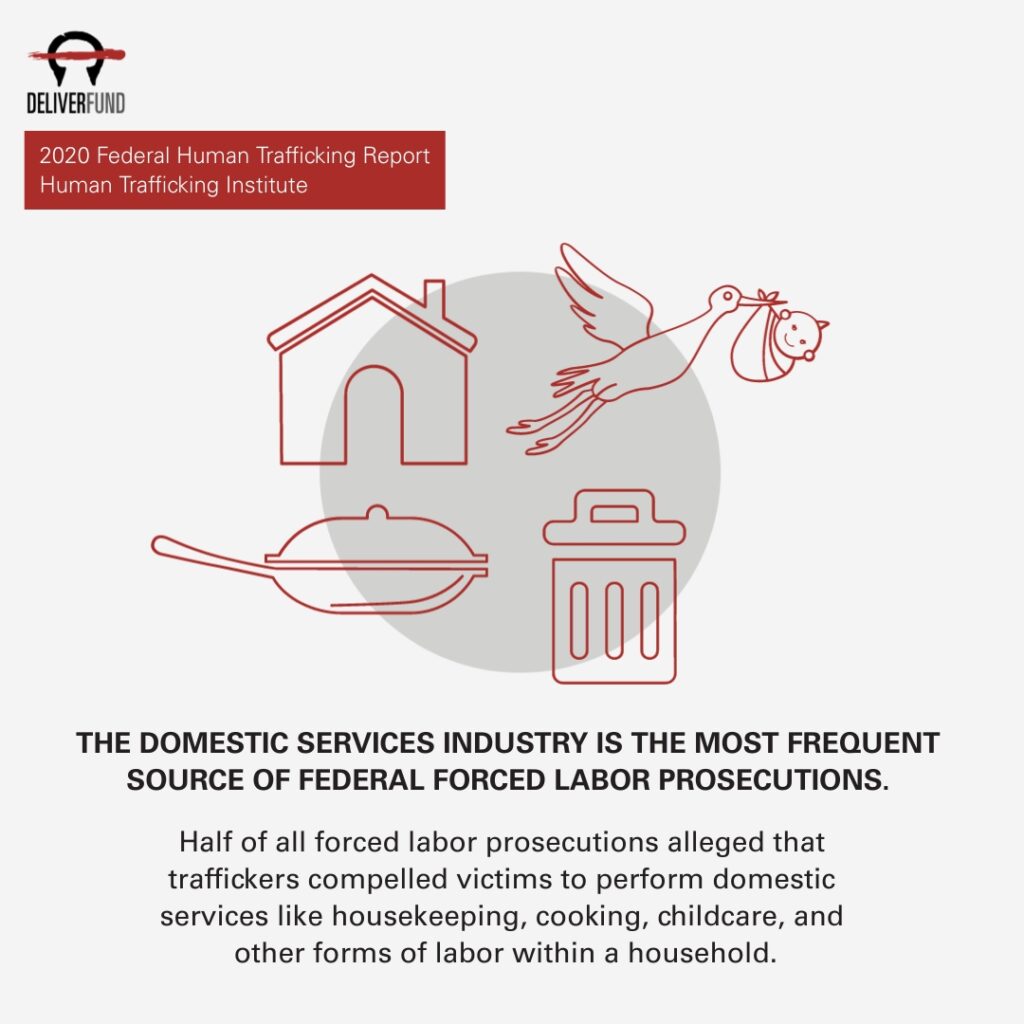Human trafficking, also known as modern-day slavery, is alive and well in the United States. Every year, millions of people in the world, including in the U.S., are bought and sold for the purposes of forced labor or sexual exploitation. It can happen to any demographic, any gender, any race or nationality.
Information You’ll Find Below
The human trafficking facts in 2024 we will be tracking are largely consistent with what we’ve been carefully observing for years. Below, you’re going to find a lot of facts about human trafficking that may be troubling to read, but it’s important that as many people as possible become aware of this serious problem and perhaps be encouraged to do something about it.
If even one person becomes aware of important human trafficking facts in 2024 that they didn’t know before, then perhaps that person will be able to identify warning signs when they see a person potentially being exploited. If that happens, then every awareness effort that anyone makes is worthwhile.
We encourage you to take a look at the facts about human trafficking below. Specifically, you’ll find information regarding:
- Sex Trafficking in the United States
- Sex Trafficking Venues
- Labor Trafficking in the United States
- Susceptibility of Migrant Populations
- Actions Taken to Prevent Human Trafficking
Click on any of the links above so you can be taken directly to the human trafficking facts in 2024 and beyond that you want to learn more about.
Sex Trafficking in the United States

It is estimated that between 15,000 to 50,000 women and children are forced into sexual slavery in the United States every year, and the total number varies wildly as it is very difficult to research. One study from the Department of Health and Human Services estimated the number between 240,000 and 325,000, while a report from the University of Pennsylvania put it at between 100,000 and 300,000.
There are many ways in which women and children are trafficked. (Note: males are indeed sometimes used in sex trafficking, but are much more commonly found trafficked in labor markets.) Some of the ways females are trafficked include pimp-controlled trafficking, in which a single person controls the victim physically, psychologically, or emotionally; gang trafficking, in which a victim is controlled by more than one person, and may be abused by the gang members or prostituted out by the gang; survival sex, where the victim feels they are not able to escape and must perform sex acts in order to survive; familial trafficking, in which the victim is abused and controlled by their family members; and forced marriages.
Sex Trafficking Venues
Sex trafficking has grown exponentially since the dominance of the internet and the online porn industry. Victims are either used for pornographic pictures or videos, or they are prostituted out through online platforms such as Craigslist, Facebook, and MocoSpace. Some dedicated websites are created through subscription services, such as the San Diego Adult Service Provider, which charged members $100 per month to browse its online catalog and purchase sex. The site was taken down by police in 2016.

Hotels and motels are a major venue for sex trafficking, often through pimp-controlled victims that are affiliated with the hotel’s owner or employees. Massage parlors are another common place for trafficking. Truck stops are a third place where pimp-controlled women and girls are found. In all of these instances, these women may be indebted to the pimp or organization and have no funds, contacts, or language skills to use to flee.
Sporting events are also a common prostitution venue. According to the National Center for Missing and Exploited Children, 10,000 prostitutes were brought to Miami for the 2010 Super Bowl. Similar reports have been made about the 2014 FIFA World Cup. The gathering of large groups of people, as well as tourists’ willingness to spend money, is what makes these large events so lucrative for traffickers.
Labor Trafficking in the United States
It’s hard to get a solid estimate of just how many people are being used as slave labor in the United States, as the government doesn’t classify every freed slave as a trafficked person. According to the National Institute of Justice, 15% of the people classified as “trafficked” are deemed to have been put into labor trafficking–but they point out that they believe that number is significantly lower than the actual total.

The most common area of labor trafficking is in agriculture, and it encompasses both legal and undocumented workers. The exploitation is often threats of violence, either to the worker or their loved ones, the threat of deportation, or perpetual debt that the worker owes to their crew leader.
It’s important to note that while some of the trafficking is on a small level (one crew leader–often a fellow migrant or worker–threatening a few people) it also takes place on a large corporate scale. For example, in 2000, the labor contractor JB Farm Labor forced hundreds of workers to farm asparagus for little to no pay. The workers, mostly from Mexico, were charged large fees that were deducted from their paychecks, leaving them trapped and enslaved. In another instance the next year, the company R&A Harvesting in Florida forced hundreds of citrus pickers to work under threat of abuse and violence. It would be inaccurate to believe that these trafficking operations are not taking place on a macro scale.
Susceptibility of Migrant Populations
Causes for migration are broken into categories of “push” and “pull.” The “push” categories are factors that force a person to migrate, such as unemployment and natural disasters. “Pull” factors are things that draw immigrants in, such as job opportunities, romantic relationships (deceitful or otherwise), and the American dream.
Human traffickers exploit these push and pull factors to get people to leave their positions of security and be exploited. Those suffering from push factors may feel they have no other choice but to accept the help of dangerous criminals–such as pursuing employment that may otherwise sound risky or untenable, but which people seek because they are desperate. Traffickers prey on individuals and families that are traveling, hungry, homeless, and sick. They may offer a job only to get the migrant away from their area of safety and force them into labor.
Likewise, pull factors entice people to come to the United States, often through deceitful practices: a trafficker may spark up a phony relationship with a person to get them to cross the border in search of a better life, only to trap them in sexual exploitation.
Actions Taken to Prevent Human Trafficking
Human trafficking in the United States has been banned since the passage of the 13th Amendment. The federal statute outlawing trafficking is Title 18 of the United States Code, particularly section 1584 which makes it a crime to make someone work against their will, and section 1581, which makes it illegal to work in “debt servitude.”
In 2000, the Victims of Trafficking and Violence Protection Act made it easier to prosecute and sentence traffickers, and provided resources to do so. There is also a National Human Trafficking Resource Center Hotline (1-888-373-7888), which answers questions and responds to crises in 170 languages. Since 2007, the hotline has logged 60,000 calls.
Safe harbor laws have also been enacted to protect victims, so that they will not be prosecuted for prostitution or other crimes they may have committed while in slavery. Doctors and medical professionals are also trained and instructed to identify and protect victims.
DeliverFund is working to counter human trafficking by attacking it from multiple angles. We equip, train, and advise law enforcement in the same counterterrorism methodologies that our founders used when they were in the CIA, NSA, Special Forces, and Navy SEALS. By disrupting the human trafficking market, we are driving human traffickers out of their business, tearing down their networks, and rescuing not only their current victims, but preventing future human trafficking victims.
The work of continuing to make as many people as possible aware of human trafficking facts in 2024 can’t be done without your help. There are several options to support our efforts beyond just donating. Please click on our Join the Fight link in order to find the best option for you to help us help those people who so badly need and deserve it.
Date Updated: 01/04/2024









